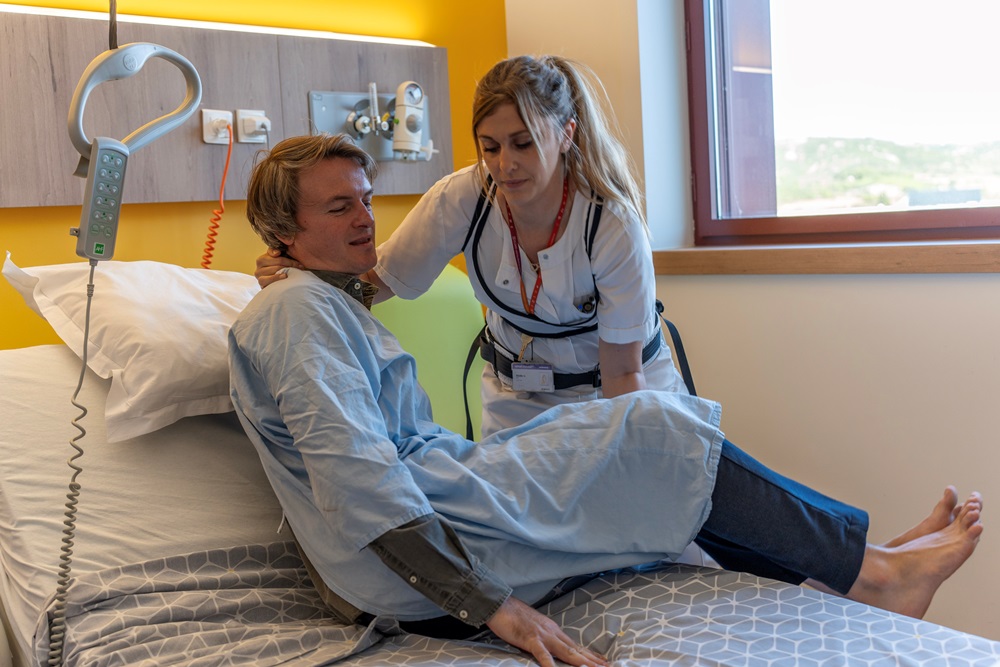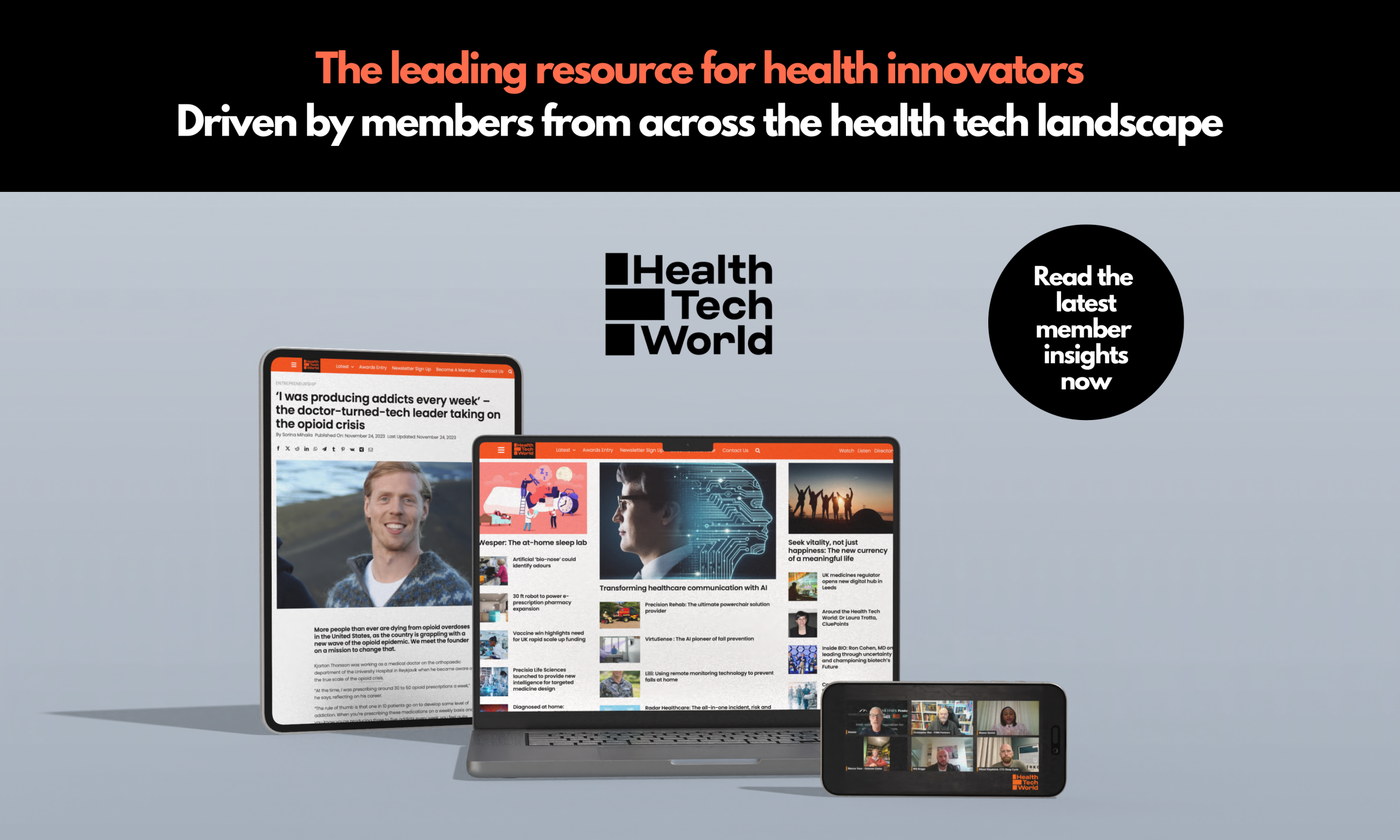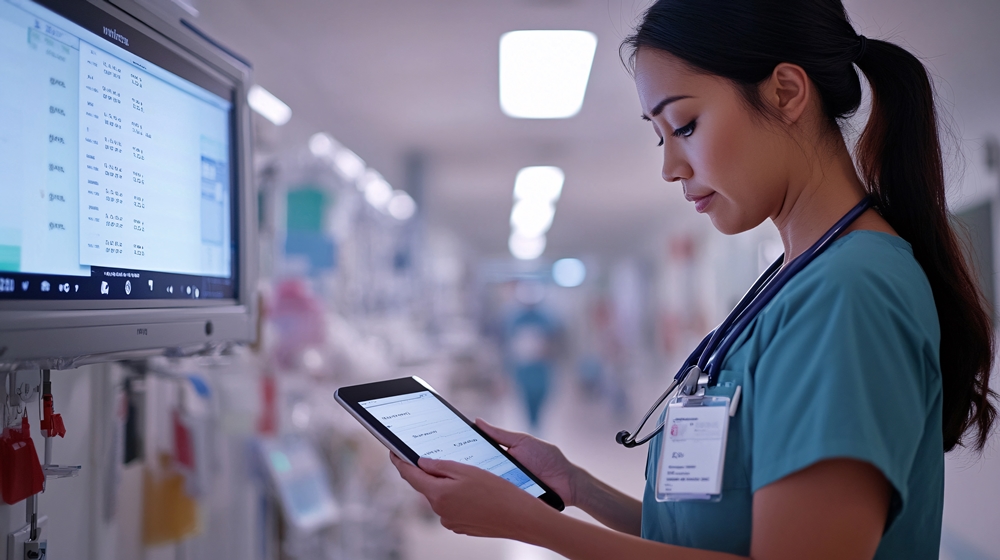
By Graham Sharp, Managing Director at Health and Safety consultancy, Stanley
The introduction of artificial intelligence (AI) wearable technologies into the UK health sector, offers tremendous potential for change.
We can already see the benefits that these technologies have brought to a range of job roles in the United States and in Europe, where the AI wearable device market is growing rapidly.
The key to this game changing technology, lies in the detailed data that the devices can collect from the wearer via sensors on the body, which include information on task movements relating to specific activities.
It is this detailed information which can be used to identify risky movements, change behaviours, and avoid injuries in the workplace.
How does the technology work?
In the UK, AI solutions such as the WearHealth exoskeleton scanning technology and “Wear” ergonomic technology, and Modjoul’s SmartBelt, are bringing disruptive change to the health and safety sector.
These devices come with AI capabilities, allowing body worn sensors to record and analyse movement to help identify patterns that build a data map of potential risk.
One of the newest technologies to hit the UK market is WearHealth’s “wear” ergonomic technology, which is an easy to use out-of-the-box solution that can be clipped onto the user’s body to track unsafe ergonomic movement.
These movements include bending, reaching, crouching and lifting.
When risky movements are made, the device alerts the wearer, allowing him or her to change position to reduce risk of injury.
The aim is to bring about gradual behaviour change and therefore cut risk of accidents and injuries.
The compact kit comes with 20-30 devices which can be tested over the course of two months across an organisation at a fixed fee and rotated around different task-based employees.
Throughout that time, health and safety managers can use the data from the AI platform to assess behaviour change and measure the reduction in risky movements.
This can then be fed into more focused safety strategies.
The technology is designed to identify and mitigate workforce risks and guarantees a 30 per cent+ reduction in hazardous movements within just two months.
The system does not require IT integration or complex hardware installation and can be rolled out in under two hours, offering real-time feedback and advanced data analysis.
This product is a huge step forward in making this type of solution more affordable and accessible than its competitors.
Exoskeleton technology

Graham Sharp
In the health sector, it is exoskeleton technology that is proving to be the most useful of these technologies so far.
Exoskeleton suits are designed to provide support to the wearer, allowing them to work for longer periods, for example when performing complex and long surgeries, or to lift patients without the risk of injury.
The AI technology built into sensors on the exoskeleton suit, provides risk analysis data which can be analysed to provide insights that allow employers to understand the support the suits are providing.
There are many different exoskeleton suits on the market that are suitable for different tasks.
WearHealth exoskeleton scanning technology helps to identify which exoskeleton is best suited to a task by using innovative video scanning technology.
The scanning technology is used to assess a particular task, make recommendations for possible exoskeleton suits, and then report back on effectiveness using sensor analysis of the activity being performed.
The right exoskeleton for that task can then be fitted and used as required based on performance and useability.
Case study 1: Harefield hospital double heart lung transplant
The world’s first double lung transplant using exoskeleton technology recently took place in a trial at Harefield Hospital.
The technology, which was supplied by Stanley, was trialled as part of a seven hour overnight operation on a 62 year old female with end stage lung disease and was performed by Mr Espeed Khoshbin Cardiothoracic surgeon.
After the operation, Mr Khoshbin said: “Using the exoskeleton suit, including taking it on and off, was remarkably straightforward.
“The suit was comfortable throughout the procedure, and I felt a significant reduction in my upper body strain.
“This is important because so many cardiothoracic and transplant surgeons suffer from neck and back-related musculoskeletal issues which can negatively impact their careers.
“Our patient is progressing very well and recovering swiftly from her surgery.”
Watch a short video of Mr Khoshbin in action here
The successful trial shows how effectively an exoskeleton suit can support the demands of a long surgical procedure and the team at Harefield plan further trials of the technology.
Exoskeleton technology has also been used with success in a care home setting trial, providing support to carers who are required to lift and move patients on a regular basis.
This can often result in back pain and injury, particularly for older carers.
Case study 2: using exoskeleton technology in a care home setting
Clarendon House Care Home in Coventry contacted Stanley because it was looking for potential solutions to improve the health and safety of its care workers and help prevent injury.
Many of the care team at Clarendon House had been working in the industry for an average of eight years and often complained of lower back pain.
Several care workers took part in a successful trial of exoskeleton suits.
The WearHealth exoskeleton scanning technology was used to help match the most appropriate exoskeleton suit to the physical task carried out by the carer and to ensure that it could assist in the usual daily tasks without the wearer finding it cumbersome or inhibiting in any way.
Sensor analysis allowed Stanley’s health and safety consultant and the care home management team to view the before and after impact using data that was generated from wearing the suit and sensors.
At the end of a two-week trial, the results showed that workers felt significantly less tired while wearing the suit and no injuries were reported in the trial period.
Care home Team Leader Agoritsa Karagiampa commented: “After a while, it felt like I wasn’t even wearing the exoskeleton suit as it allowed me to confidently lift and move patients, knowing that I had the extra back support.
“It was easily adjustable, and I would love to be able to continue wearing the suit at work.”
The team at Stanley are now working with Clarendon House to introduce a wider implementation programme and rollout of the technology.
Return on investment
AI-enabled technologies are already reshaping workplaces across the UK, and their presence is set to expand across a wide range of sectors.
This is especially true for roles that involve repetitive physical tasks—such as lifting, reaching, bending, and stretching—which carry a higher risk of accidents and injuries.
Encouragingly, early implementations are delivering strong results, as the examples above illustrate. We are well on our way to building safer, healthier, and more satisfied workforces, while also unlocking greater productivity and efficiency for organisations that are embracing this transformation.
Graham Sharp is Managing Director of Health and Safety experts, Stanley who work with businesses to transform workplace safety, reduce manual handling injuries, improve efficiencies and reduce costs by matching them with the most effective solutions in AI data driven wearable safety technology.







